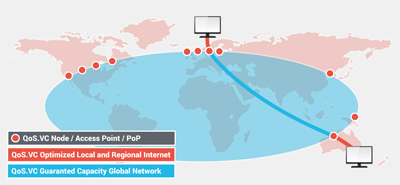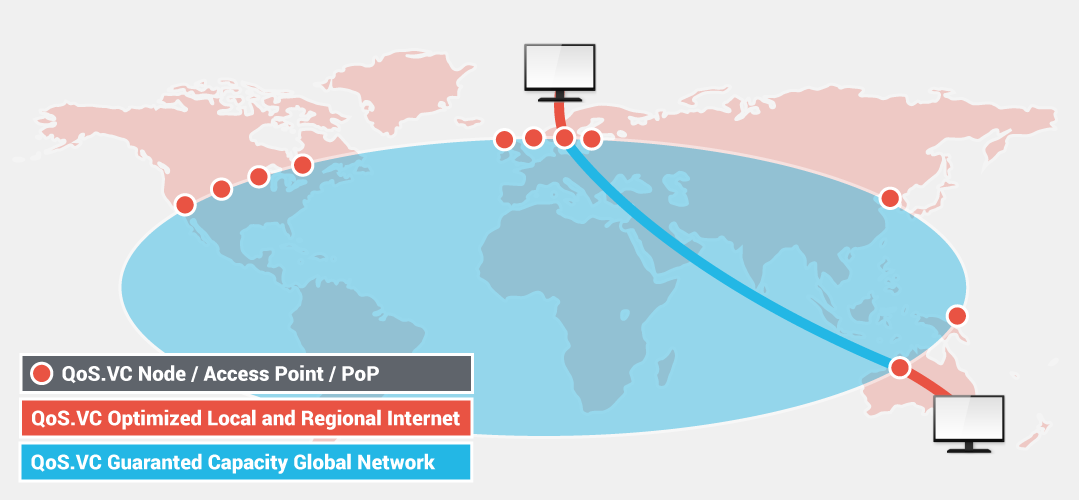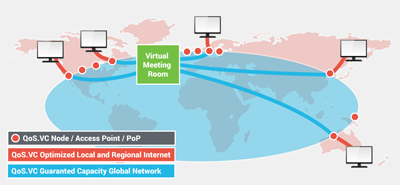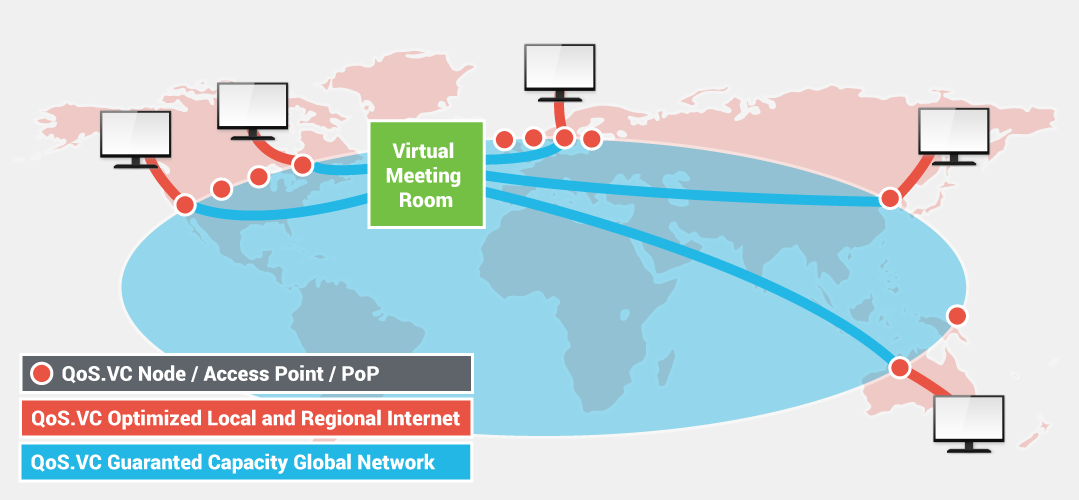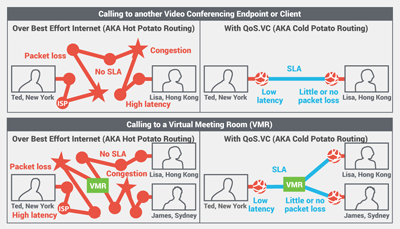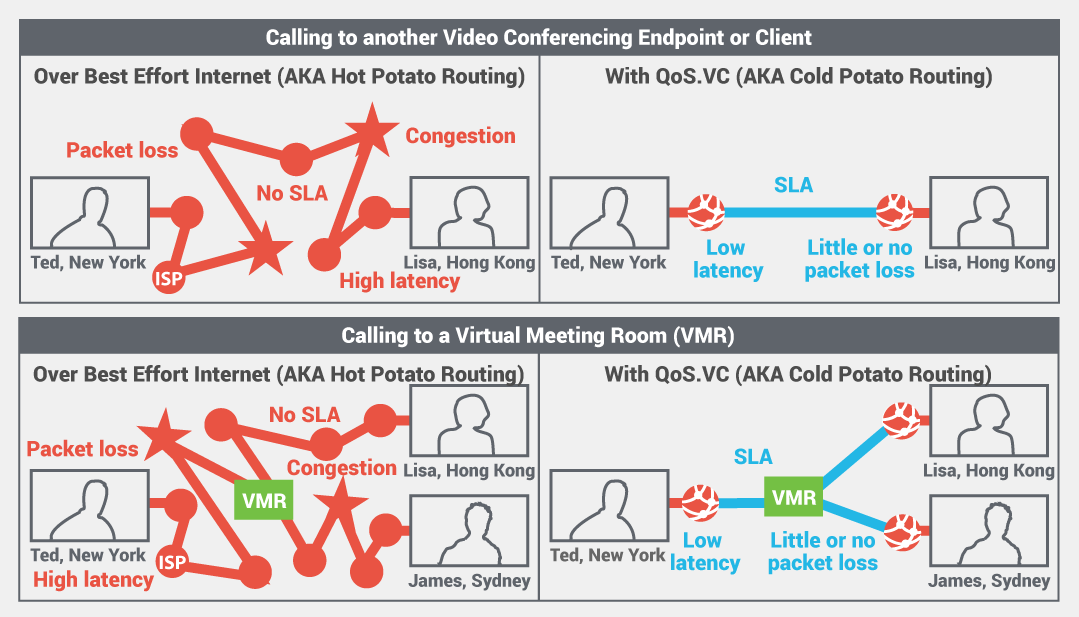Calling Another Video Endpoint or Client
QoS.VC minimizes the use of unreliable Internet by routing video traffic through the closest QoS.VC nodes to the caller and callee, and by using its global high capacity network between the nodes.
Subscribers get QoS.VC quality on both inbound and outbound calls. Non-subscribers also gets the QoS.VC quality when calling/receiving a call from a subscriber.
Calling a Virtual Meeting Room
QoS.VC subscribers calling a Virtual Meeting Room (VMR) receive and transmit with QoS.VC quality. Non-subscribers do not, and their connectivity may also affect subscribers that have called into the VMR.
The VMR itself can also be QoS.VC enabled, ensuring QoS.VC quality for all participants regardless of whether they are QoS.VC subscribers or not.
How Can QoS.VC Be Better than Internet?
While Internet is perfect for activities such as browsing and emails, it was never built for interactive two-ways visual collaboration. Internet is built up of independent local and regional ISPs that have no incentive to route traffic the most quality effective way. This is why video calls carried over Internet often experience high packet loss and high latency.
QoS.VC on the other hand is incentivized (by its subscribers) to route traffic the most quality effective way, keeping a stable low latency and minimizing potential packet loss.
